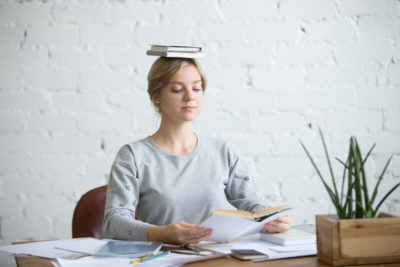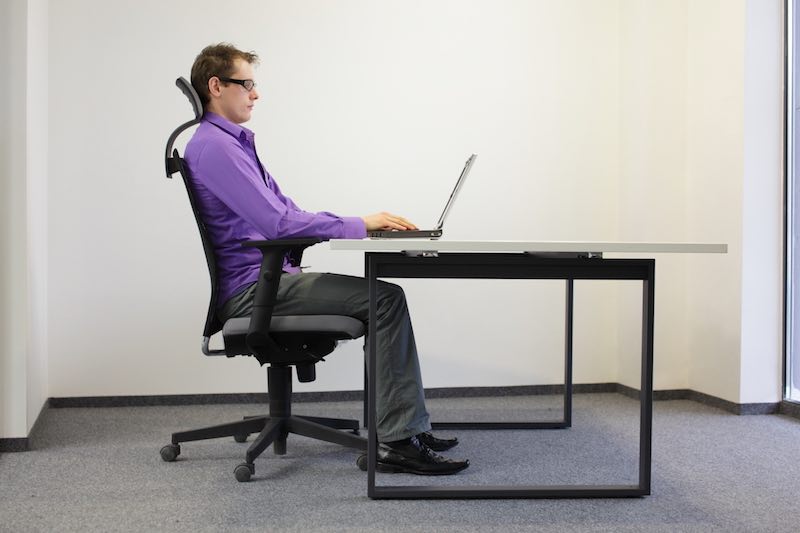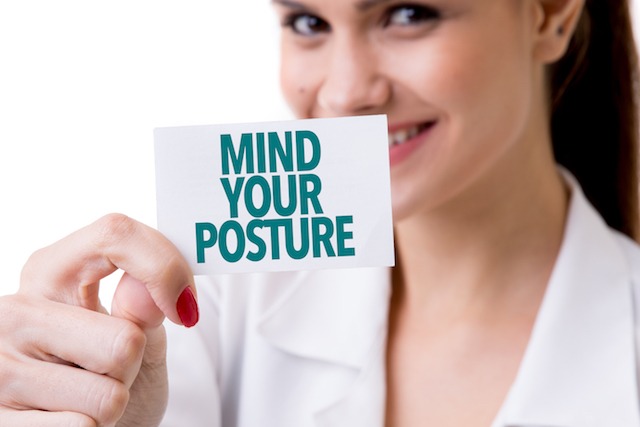
Correct Posture Checklist
Table of Contents
Having a correct posture checklist is very much a sign of the times. In today’s tech world, our posture – or lack thereof – has been given a name all it’s own: iPosture.
This rounding of the backbone, regardless of its new name, has been over 150 years in the making.
The Sign Of Good Upbringing
In the 18th century, proper posture was seen as a sign of good upbringing, attractiveness, trustworthiness, and dignity. President’s Washington and Lincoln were said to have minds that achieved their high potential due, in part, to their correct posture.

During the first half of the 20th century, The American Posture League was a strong proponent of posture studies in schools. Several books, such as The School and Industrial Hygiene, condemned the design of school furniture, saying that 83-92% of students suffered from spinal deviations as a result.
Right Posture Radicals?
As hard as it may be to believe today, Ivy league administrators dismissed prospective students if their posture and physical condition were seen to be inappropriate at the time of enrollment.
Universities such as Vassar started a fundamentals program in the 1930s that continued through the 1960s. Students were taught the elements of good posture when engaged in any kind of life activity.

The ’60s saw the emphasis on good posture wane. Since the late 19th century, the posture of every generation has continued to evolve, and we humans are now exhibiting iPosture and text neck.
And so, 150 years later, we have come to understand that our ancestors, while a bit overzealous, were right to emphasize a healthy posture.
Posture Basics
The term posture describes the position of a person’s body when standing, sitting, or lying down. Good posture keeps bones and joints in the correct alignment so that muscles are being used properly.
Posture correction helps decrease the abnormal wearing of joint surfaces. It also reduces the stress on the ligaments holding the joints of the spine together.
A Need For Posture Correction
And so, with this information in mind, we come to our correct posture checklist, which starts with a list of to-do’s that will help achieve a healthy posture, or provide a posture correction if needed.

Checklist or To-Do’s For Correct Posture
Find a cause
If you have a problem, you first need to pinpoint the cause. Most posture issues happen because the muscles that work to hold a joint in place are not in balance.
Do a standing assessment
Put on form-fitting clothes. Stand barefoot and stand as you do naturally. Have someone take a full body picture from the front, side, and from behind.
Evaluate the assessment
In your photo, your joints should be stacked. The ears are over the shoulders, the ribs over the hips, and the hips over the heels.
Check this out
This article will provide you with answers and exercises to your assessment issues.
Don’t Be a Slouch
Slouching adds to the stress on your spine. It will also put a strain on the bones, muscles, and joints needed to hold your backbone in place. Not only does your spine feel the stress, but your internal organs also have to work harder to get enough air or to digest food.
Limit Time spent in Heels
High heels make the base of your spine thrust forward, and this over-arches your back. This changes how your backbone lines up and will put pressure on nerves.
Get Up
Take brief breaks during the day. Simply get up and move! A few easy, quick exercises can get your blood moving and elevate stiffness.
Stay active
Most exercises will help to achieve a healthy posture, but activities such as yoga and tai chi are especially helpful. Look for exercises that strengthen your core.
Maintain a healthy weight
Carrying additional weight will create problems for your spine and pelvis.
Don’t cross your legs: Keep your feet flat on the floor. Keep your ankles in front of your knees. If your feet do not touch the floor, make sure you have a footrest.
Keep your Elbows in Close To Your Body
Keep your elbows bent between 90 and 120 degrees.
Keep Back, Thighs, Hips Supported
If needed, use a pillow to support your lower back. Your chair should have a padded seat. Keep your thighs and hips parallel to the floor.
Checklist of Must-Haves For Correct Posture

Back Posture Corrector
Even if used for half an hour a day, this corrector can help realign your spine, and help create some muscle memory. Noble Urban did a review of the correctors here.
Have A Timer
We have established that it is crucial to take a movement break. Set a timer or use an app like Stretchy, WorkRave, or Big Stretch Reminder.
Footrest
If your feet do not touch the floor, make sure you have a small footrest.
Lumbar Support Cushion: This is important for supporting your lower back. Bring one from home, or look online for ones specifically made for support.
Ergonomic Office Chair
This is a must, must have! We spend eight or more hours a day sitting. If you are not spending those hours in a chair that aids in supporting your body, your posture, back, and internal organs are going to suffer.
Standing Desk
Back pain is one of the most common complaints of office workers who sit all day. One study showed a 32% improvement in lower back pain after several weeks of using standing desks.
Laptop/Monitor Stand
Using a monitor stand to position your monitor to a user-friendly height will reduce both eye and neck strain. This will also help you maintain a healthy posture during your workday.
Balance Ball Chair
A stability balls on wheels, this chair is designed to improve your posture and activate your core. Some users say that it helps increase energy levels.
Lift Posture Coach
This tracker, which syncs to your smartphone, will alert you when you’ve slumped or slouched too far from a neutral spine position. It uses a small magnetic sensor that is connected near your collarbone.
Posture Corrector Tshirt
A posture corrector shirt is a shirt that serves the purpose of signaling targeted muscles to perform specific functions to ensure correct posture. The shirt uses materials such as polyester, Lycra, spandex, and a combination of fibers.
By using patented technologies to harness the properties of different materials, the shirts help provide support and stability to various muscles in the back.

In Conclusion
Times may have changed, and our attitude toward strict posture practices may have taken a turn for the worse. One thing has not changed; our bodies are negatively impacted by poor posture. Fortunately for us, we do not have to live with the adverse effects of iPosture or text neck.
We have both the knowledge and modern tools to help us live a healthy, productive life, using our minds to their greatest potential. Just like our forefathers!
